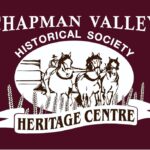Churches of Chapman Valley
St Bridget’s Catholic Church – Nabawa
In 1892, Michael Morrissey of the Mount Erin Estate had a rammed-earth building constructed to be used as a Catholic Church. The larger Roman Catholic Church of St Brigid was built later, close to the old Morrissey building which served as both school and church. It was part of the Northampton parish with Rev. Father O’Hare in charge. The first meetings of the Upper Chapman Road Board were held there, prior to the construction of the Nanson Roads Board building in 1913.
After the Nanson church was built in 1938, services were held alternately between the two churches. This arrangement continued until 1963 when services at St Brigid’s Church were no longer held. It was later demolished.
Source: Chapman Valley Historical Society
Municipal Inventory of Heritage Places
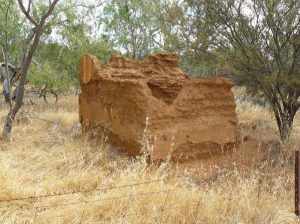

Photos courtesy Chapman Valley Historical Society
Our Lady of Fatima Church – Nanson
In the late 1930s there were a significant number of Catholic school-aged children living in the Nanson locale to warrant consideration of a school. In 1936, Reserve 21544 was gazetted as a Reserve and vested in the Geraldton Diocese.
In early 1938, renowned Priest-Architect Monsignor John Hawes drew up plans for a school building, and the foundation stone for the building was laid by the then Bishop of Geraldton, James Patrick O’Collins, on Sunday 13 November 1938. The stone school building was constructed by builder Enrico (‘Henry’) Boschetti for approximately 650 pounds. The building was officially blessed and opened by Dr J.P. O’Collins on 29 January 1939. Three Presentation Sisters from the Northampton Convent arrived to live in the adjacent Convent and teach at the new school.
In the early 1950s, the Nanson school was modified for use as a church, with the sympathetic addition of a sanctuary and sacristy extending out from the western facade, designed by Summerhayes & Associates. When classes were held, the church seating was converted into desks and then changed back again for Sunday Mass.
Behind the Church is the convent chapel which was also built to a design by Hawes. A simple square building of local stone, it is now a private home and can only be viewed from the church.
Approximately 30-40 students attended the school at this time. Following a decline in the local population the Presentation Sisters were forced into closing the school in 1965. The church is still used on a regular basis with services conducted by the Geraldton priest.
Source: Chapman Valley Heritage Trail
Municipal Inventory of Heritage Places
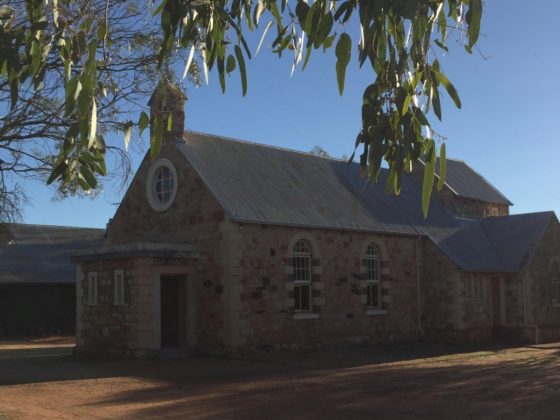
Photo courtesy Jenny MacKay
St Lukes Anglican Church – Nanson
St Luke’s Anglican Church was built in 1952. The foundation stone was laid by the Bishop of North Western Australia, The Right Rev. J. Frewer on 3 February 1952. The construction was by local stonemason, Fred Murphy using local stone.
Further reading: New Church at Nanson
Source: Municipal Inventory of Heritage Places
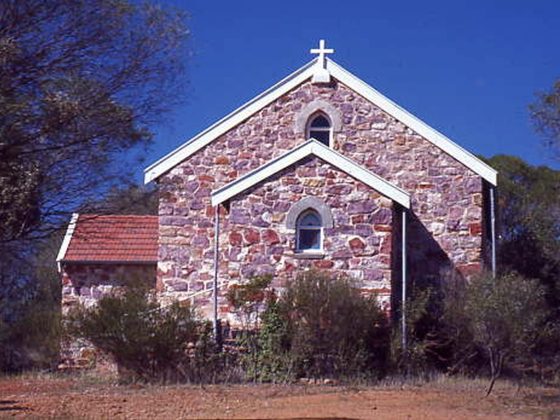
Photo courtesy Chapman Valley Historical Society
St Bartholemew’s Anglican Church – Nabawa
The first services of the Anglican Church in the Nabawa area were held in private homes. In 1912 the Church of St Bartholomew, a weatherboard and iron building, was erected on land given by Samuel Hadley Jupp at the southern end of Nabawa. It was part of the parish of Northampton. Due to the ravages of time and white ants this building was demolished in 1951 and a new church was erected in 1959.
The land on which the church is built was donated by Mr S.E. Gould. Designed by architects Henderson and Thompson and erected at a cost of 3,680 pounds, by the Geraldton Building Company, the church was dedicated in December 1959, by His Lordship the Bishop of the North-West, the Right Reverend J. Frewer.
Source: Municipal Inventory of Heritage Places
Geraldton Guardian, Tuesday December 22, 1959, pg 15
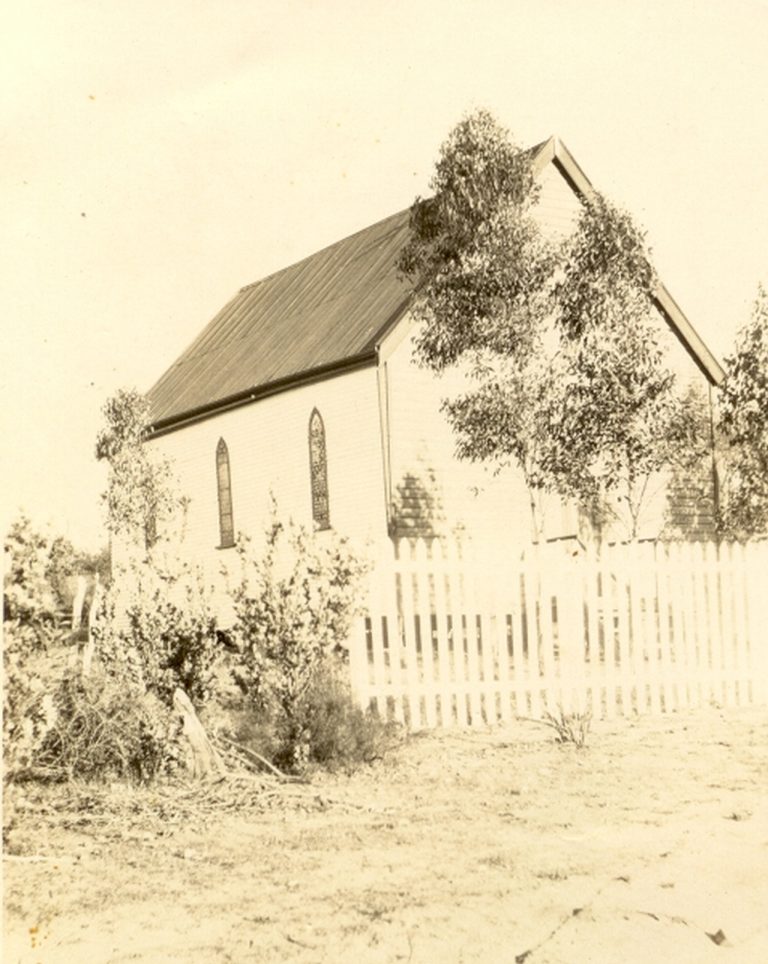

Photo courtesy Chapman Valley Historical Society
Church Hall – Naraling
Narling, 54km north-east of Geraldton, was declared a townsite in 1910 when the Wokarena-Naraling branch railway line was officially opened at Naraling on 8 October 1910, and was extended to Yuna in 1913. The railway encouraged settlement in the area and with the increased population there emerged shops, a school, a blacksmith’s shop and a RSL Hall. Naraling also boasted tennis courts and a sports oval
In 1913, Naraling suffered a severe cyclone, which unroofed a large weatherboard cottage, moved the school off its foundations and partially wrecked several other buildings.
It was decided in 1923 that in the interests of the area a church hall should be built at Naraling. This stone building 40 feet by 20 feet, was built on the site of the blacksmith’s shop, which was demolished. The foundation stone was laid by James Criddle on 21 August 1926 and was constructed by local stonemason, Bob Salmon, using local stone carted from Joe Pascoe’s property at Nolba. Bob Salmon was responsible for the construction of numerous buildings in the district including the Nolba Post Office and Exchange buildings as well as a number of private residences such as Annan and Roskams Farmhouses.
The Hall was declared open on 27 November 1926, by Mr Neil Calder, with a large gathering of residents present for the occasion. Until a few years ago the hall was used for occasional church services, meetings and social functions.
Source: Chapman Valley Heritage Trail
Municipal Inventory of Heritage Places
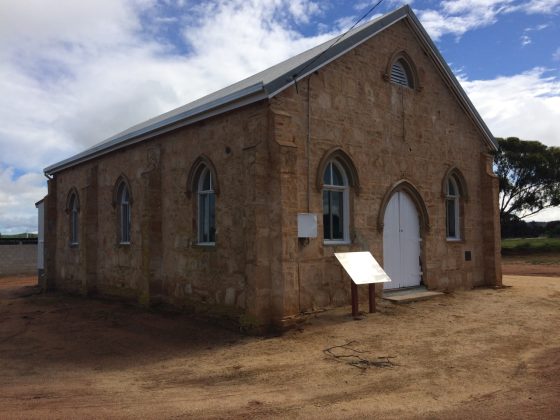
Photo courtesy Jenny MacKay
Woodstock Homestead – Yuna
William (Bill) Tayler took up 4,000 acres of land in the Yuna district in the early 1900s, following which he and his brother John commenced clearing the land for farming purposes. Initially living in tents, they called the farm “Woodstock” after the street the family had lived in Maryborough, Queensland. In 1910, the Tayler brothers harvested the first crop in the Yuna district.
The house was used for monthly Anglican church services for many years until a local hall was built closer to Yuna. Tennis parties were held on the ant bed surfaced court and were popular during the 1920s and 1930s. I later years, the Anglican congregation of Yuna worshiped in the CWA Centre and regular monthly services were conducted by the minister from Northampton.
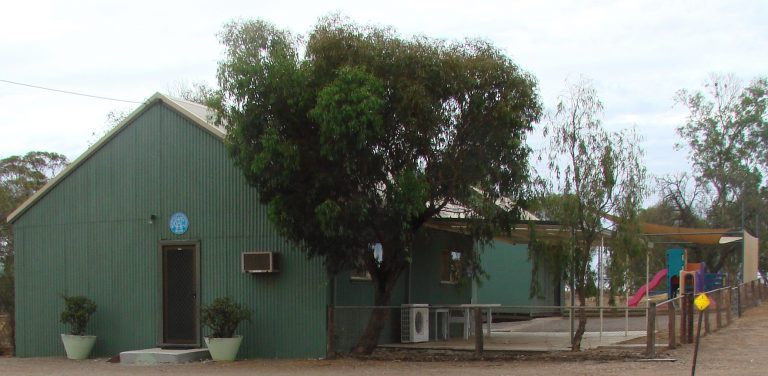
Photo courtesy Pam Batten
Our Lady Queen of Peace Roman Catholic Church – Yuna
Between 1923 and 1930, an annual Catholic Mass was celebrated in Yuna by Father John Cyril Hawes. Hawes, the Parish Priest at Mullewa would ride his horse to the McGauran home in East Yuna where the Mass was celebrated.
Between 1923 and 1963, Monsignor Irwin from the Northampton Parish celebrated Mass in the Rockwell Hall and also at the Nabawa church. Following the opening of the South Yuna School in 1929, Monsignor Irwin celebrated Mass there for people in the Yuna district. In 1963 Monsignor O’Connor was appointed Parish Priest of Northampton and it was at this time that the idea of building a church in Yuna developed. A planned giving programme was organised and together with a generous donation of grain, enabled the church to be constructed.
Charles Taylor donated the land and local parishioners donated their time. On 22 October 1967 the church, Our Lady Queen of Peace, was blessed and opened by the Most Reverend F.X. Thomas DD, Bishop of Geraldton. A large crowd was in attendance followed by a social evening at the Yuna Memorial Hall. Both Anglican and Catholic Church services have been conducted in this building.
Source: Municipal Inventory of Heritage Places.
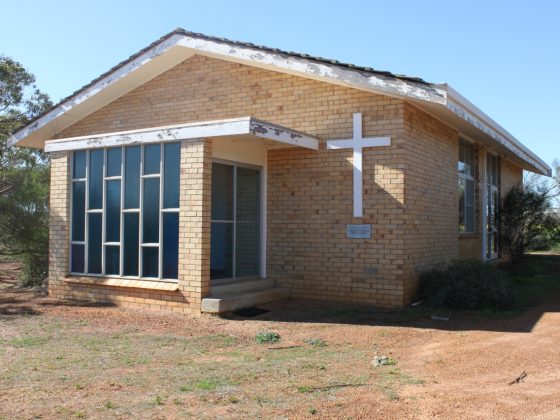
Photo courtesy Catholic Diocese of Geraldton
